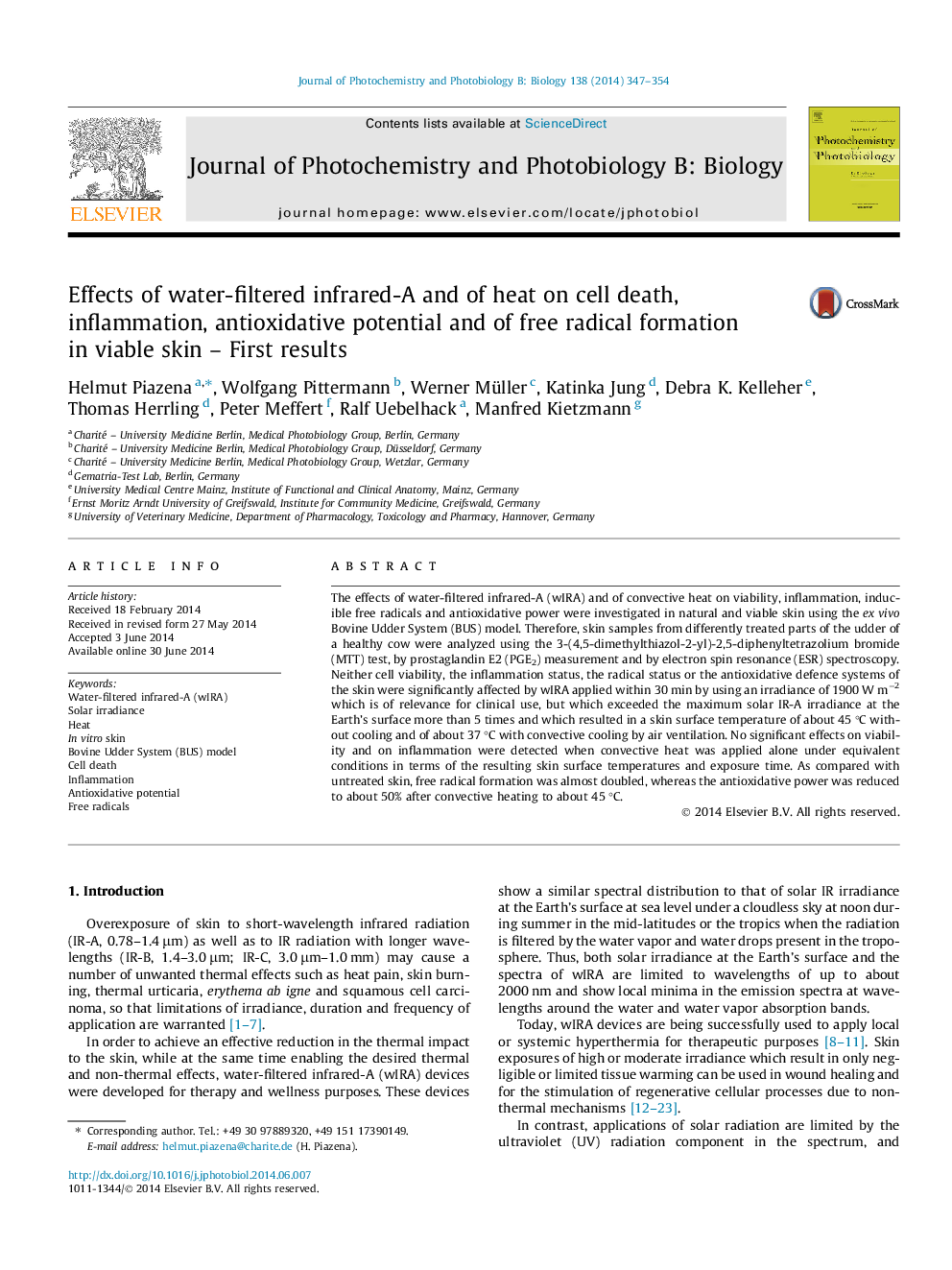| کد مقاله | کد نشریه | سال انتشار | مقاله انگلیسی | نسخه تمام متن |
|---|---|---|---|---|
| 30314 | 44468 | 2014 | 8 صفحه PDF | دانلود رایگان |

• Effects of wIRA and of heat on skin were compared for induced temperatures up to 45 °C.
• Neither cell death, inflammation, nor free radical generation were significantly induced by wIRA.
• No significant effects on viability and on inflammation were caused by convective heat.
• Free radical formation was almost doubled, and antioxidative power almost halved after convective heating to about 45 °C.
The effects of water-filtered infrared-A (wIRA) and of convective heat on viability, inflammation, inducible free radicals and antioxidative power were investigated in natural and viable skin using the ex vivo Bovine Udder System (BUS) model. Therefore, skin samples from differently treated parts of the udder of a healthy cow were analyzed using the 3-(4,5-dimethylthiazol-2-yl)-2,5-diphenyltetrazolium bromide (MTT) test, by prostaglandin E2 (PGE2) measurement and by electron spin resonance (ESR) spectroscopy. Neither cell viability, the inflammation status, the radical status or the antioxidative defence systems of the skin were significantly affected by wIRA applied within 30 min by using an irradiance of 1900 W m−2 which is of relevance for clinical use, but which exceeded the maximum solar IR-A irradiance at the Earth’s surface more than 5 times and which resulted in a skin surface temperature of about 45 °C without cooling and of about 37 °C with convective cooling by air ventilation. No significant effects on viability and on inflammation were detected when convective heat was applied alone under equivalent conditions in terms of the resulting skin surface temperatures and exposure time. As compared with untreated skin, free radical formation was almost doubled, whereas the antioxidative power was reduced to about 50% after convective heating to about 45 °C.
Journal: Journal of Photochemistry and Photobiology B: Biology - Volume 138, 5 September 2014, Pages 347–354